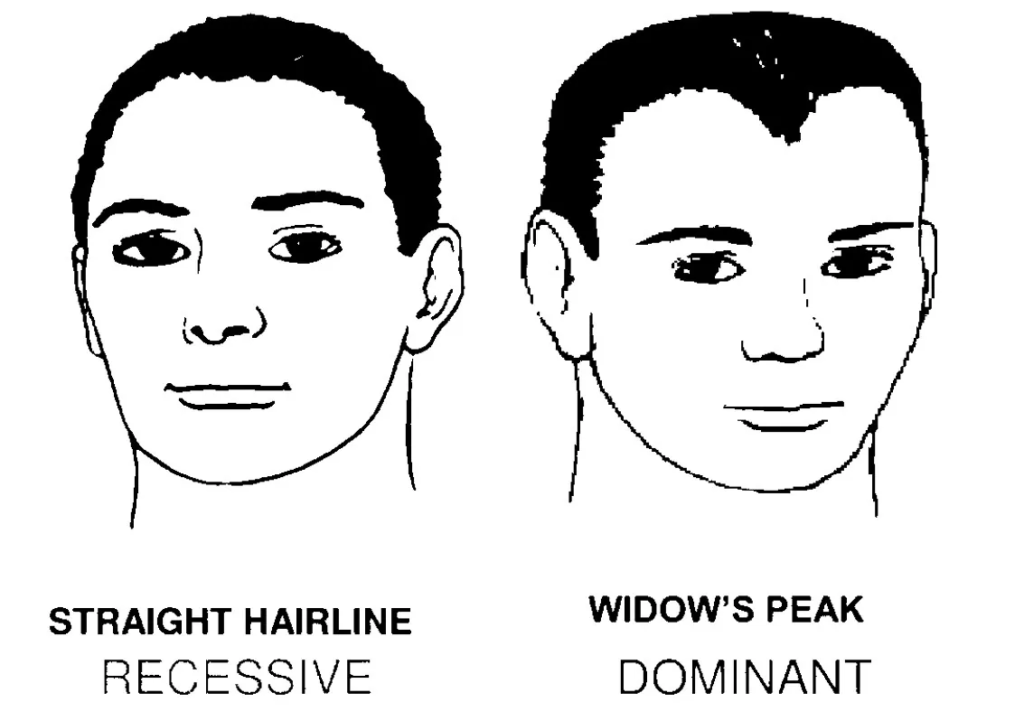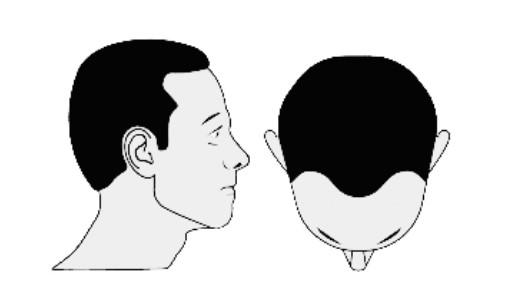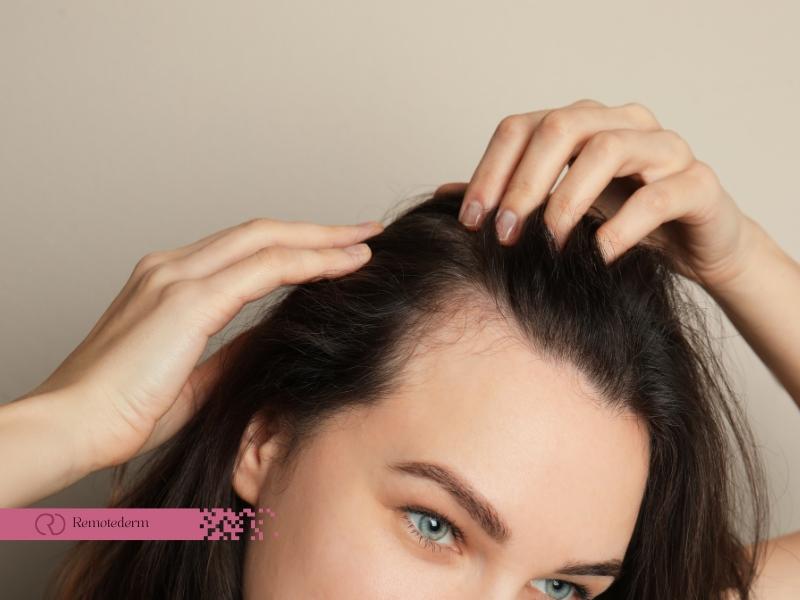Hairlines are as unique as fingerprints, shaping facial symmetry and overall appearance. In this guide, discover the different type of hairline, expert hair care tips, and solutions for hair loss concerns in Canada. Embrace your individuality and learn how to choose the right hairstyle for your unique hairline.
What Are The Every Type of Hairline?
Understanding the diverse range of hairline types is crucial in identifying individual characteristics and choosing suitable hairstyles. Here’s a breakdown of some common hairline variations:
Straight Hairline
A straight hairline is characterized by a horizontal line across the forehead, typically seen in individuals with oval or round face shapes. This type of hairline is considered ideal for various hairstyles and is often associated with youthful appearances. Straight hairlines offer versatility in styling options, allowing individuals to experiment with different cuts and lengths to complement their facial features.

Widow’s Peak
The widow’s peak hairline exhibits a distinctive V-shaped point at the center of the forehead. It is common in both men and women and can add character to one’s appearance. While versatile for styling, a widow’s peak may require attention to balance, especially when choosing hairstyles that complement its unique shape. Many individuals embrace the widow’s peak as a defining feature that adds personality to their overall look.
M-Shaped Hairline
Resembling the letter “M,” the M-shaped hairline features two recessions on either side of the forehead. This type of hairline is often associated with male pattern baldness but can occur naturally in women as well. Individuals with an M-shaped hairline may explore strategic styling techniques to minimize the appearance of recession areas, such as opting for layered cuts or using hair products to create volume and texture.

High Hairline
A high hairline is situated higher on the forehead, giving the appearance of a larger forehead. It can be genetic or result from hair loss over time. While a high hairline offers opportunities for creative styling, individuals with this type of hairline may need to carefully consider proportions when choosing hairstyles. Techniques such as side-swept bangs or textured layers can help soften the forehead’s appearance and create a more balanced look.
Hair Care Tips for Different Hairline Types
Maintaining a healthy hairline requires the right care tailored to your unique hairline type. Here are essential tips specifically designed to address the needs of various hairlines, helping you achieve optimal hair health and appearance in Canada.
1. Use Gentle Hair Care Products
Opt for mild shampoos and conditioners specifically formulated to nourish and protect the hairline. Harsh chemicals can strip the scalp of its natural oils, leading to dryness and potential irritation along the hairline. Look for products free from sulfates and parabens to maintain optimal scalp health and minimize the risk of irritation.
2. Avoid Tight Hairstyles
Steer clear of hairstyles that exert excessive tension on the hairline, such as tight ponytails, braids, or cornrows. Constant pulling and tugging can weaken the hair follicles and contribute to hair loss along the hairline. Instead, opt for loose, comfortable styles that allow the hair to breathe and minimize stress on the scalp.
3. Protect from Sun Damage
The hairline is especially vulnerable to harsh weather conditions, such as intense sun exposure in Canada, which can lead to dryness, brittleness, and sunburn. Protect your hairline by wearing hats, scarves, or using hair products with UV protection to shield it from the sun and harsh winter winds. For extended outdoor periods, consider a wide-brimmed hat or scarf to provide extra protection to sensitive areas like the forehead and temples.

4. Consult a Dermatologist
If you’re grappling with concerns about hair loss, thinning, or scalp irritation along your hairline, it’s crucial to seek professional guidance from a dermatologist or trichologist. These specialists possess the expertise to evaluate your unique condition, uncover potential underlying causes, and propose personalized hair care regimens and treatment plans tailored to your specific requirements. Whether it’s through prescription medications or advanced hair restoration therapies, consulting a dermatologist guarantees access to comprehensive care and assistance in tackling your hair health issues effectively, including the possibility of obtaining an online hair loss prescription when appropriate.
5. Considering Hair Transplantation
Consider hair transplantation in Canada if you’re looking for a more permanent solution to your hair loss issues. Hair transplantation procedures involve moving hair follicles from donor areas to areas with thinning or balding, resulting in natural-looking and long-lasting hair restoration. Individuals who consider surgical options such as hair transplantation can regain confidence in their appearance and reap the benefits of fuller, thicker hair. Consultation with a qualified hair transplant surgeon in Canada can provide useful information about the suitability of this procedure based on individual hair loss patterns and expectations.
Final Thoughts
Understanding your type of hairline is the first step towards embracing your unique features and exploring hairstyles that complement your natural contours. Whether you have a straight hairline, a distinctive widow’s peak, or a high forehead, each type offers its own beauty and styling opportunities. In Canada, where weather and lifestyle play a big role in hair care, it’s important to prioritize hair care practices and seek professional guidance for addressing hair loss concerns effectively. Embrace your individuality, and let your hairline be a reflection of your unique personality and style.
FAQs
- Are certain type of hairline more prone to hair loss than others?
Some hairline types, such as high hairlines or those with pronounced recession areas, may be more susceptible to hair loss due to genetic predispositions or hormonal factors.
2. Are there non-surgical options for addressing hair loss?
Yes, non-surgical options such as topical treatments, oral medications, and lifestyle adjustments can help manage hair loss and promote healthy hair growth.
3. Is it possible to change the natural shape of a hairline?
While some styling techniques can create the illusion of a different hairline, altering the natural shape typically requires surgical interventions such as hairline lowering procedures or hair transplants.
4. Is it normal to experience hair shedding along the hairline?
Some degree of hair shedding is normal, but excessive or prolonged shedding along the hairline may indicate underlying issues that warrant attention from a dermatologist or hair care specialist.
